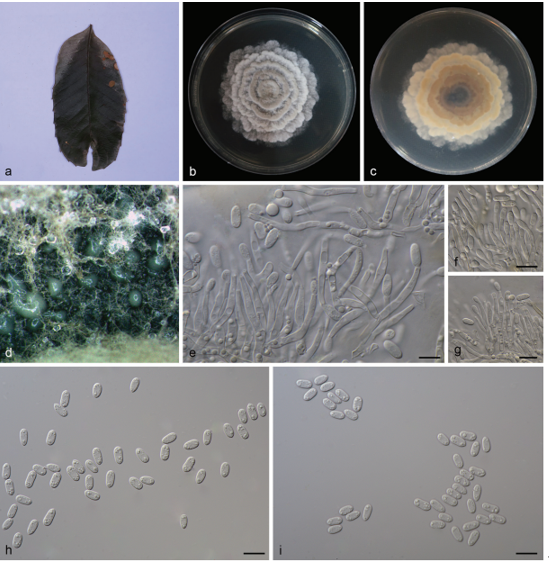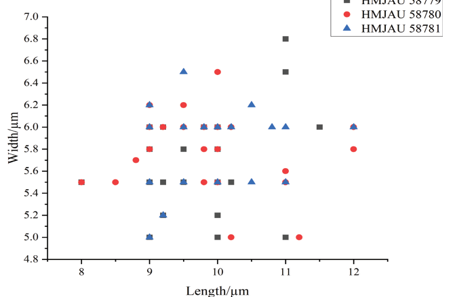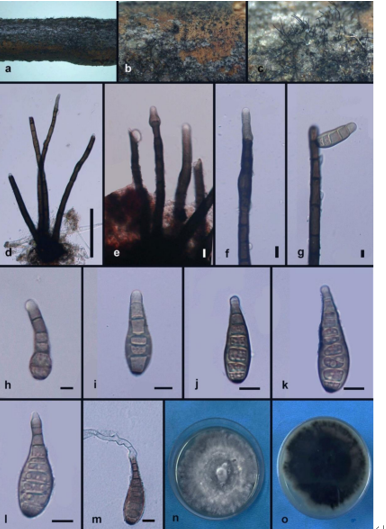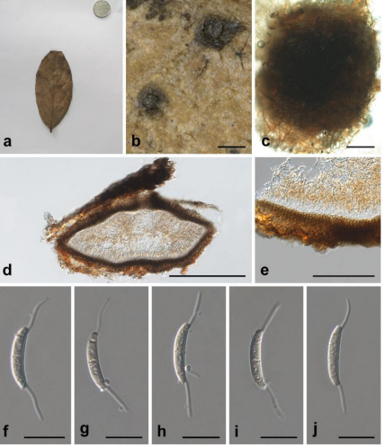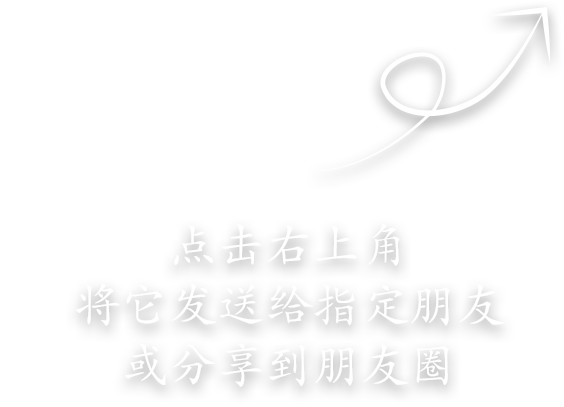Exophiala ellipsoidea W. Sun, L. Su, M.C. Xiang and X.Z. Liu, sp. nov. 2020
MycoBank MB 824208
Holotype: China: Hebei Province: Zhangjiakou City, 40◦230 N, 114◦510 E, 1011 m a.s.l., from rock,24 October 2013, Lei Su, (HMAS245364 (dried culture)–holotype and CGMCC 3.17348–ex-type culture).
Morphological description
Hyphae septate, hyaline, spirally twisted hyphae frequently observed (Figure 21B,C). Yeast cells absent. Conidiogenous cells, ovoid to elongate, pale brown, 4.7–8.6-µm-long (Figure 21D–F). Conidia, one-celled, thin and smooth-walled, hyaline or pale olivaceous, broadly ellipsoidal to cylindrical with truncate hilum, 2.1–6.4 × 1.1–4.0 µm (x = 5.2 × 3.1 µm, n = 20) (Figure 21E,F).Culture characters: Colony on MEA growing slowly, attaining 23-mm-diam. after four weeks at 25 ◦C. Colony surface velvety with pale olivaceous aerial mycelia at the center with a wide well-defined darker margin; reverse olivaceous black (Figure 21A). No diffusible pigment produced. Minimum 4 ◦C, optimum at 20–25 ◦C, and maximum 33 ◦C.
Habitat: from rock
Distribution: China
GenBank Accession:
Notes: Morphologically, E. ellipsoidea resembles E. campbellii in oval to ellipsoid conidia, but the conidia of E. ellipsoidea (2.1–6.4 × 1.1–4.0 µm (x = 5.2 × 3.1 µm, n = 20)) are longer than that of E. campbellii (3.5 to 5.0 by 2.0 to 3.0 µm) [70].
Reference: Wei Sun , Lei Su , Shun Yang et al.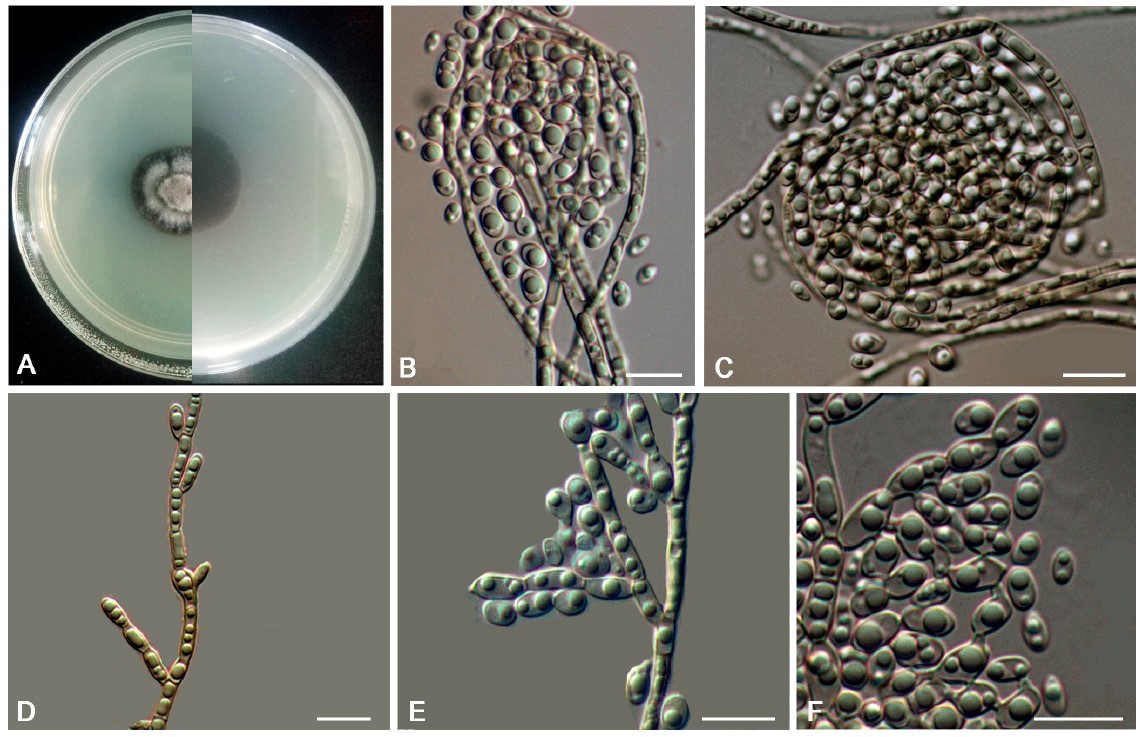
Exophiala ellipsoidea (CGMCC 3.17348). (A) Forward (left) and reverse (right) of colony on MEA. (B,C) Spirally twisted hyphae. (D–F) Conidiophores with branched conidial chains. Scale bars:(B–F) = 10 µm.


